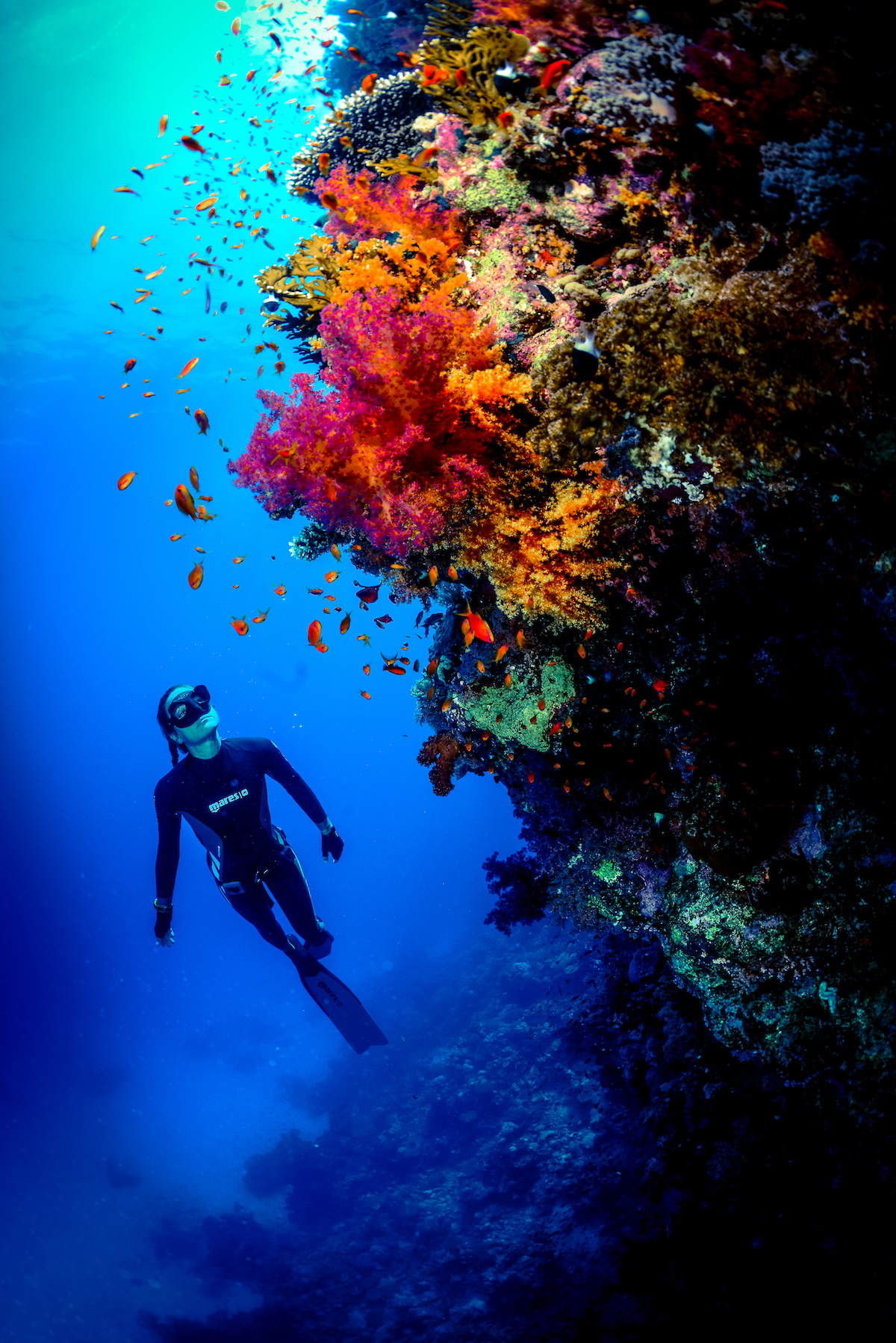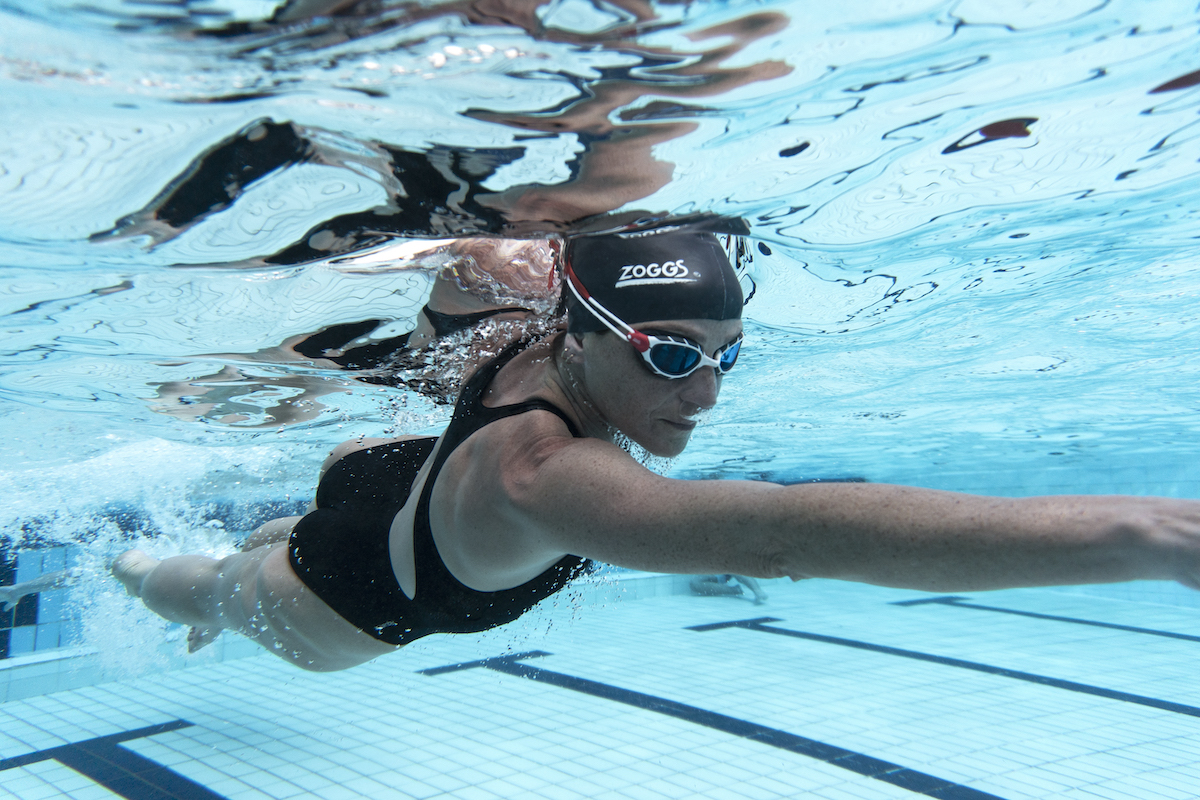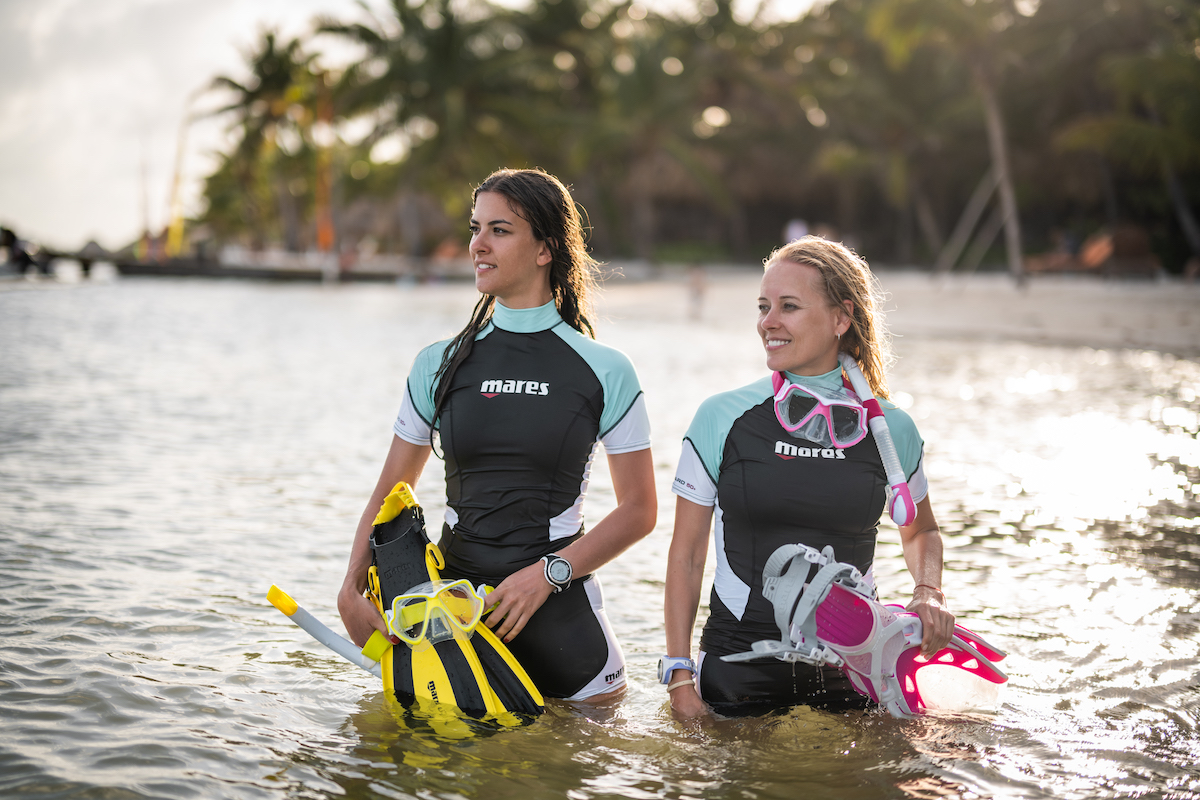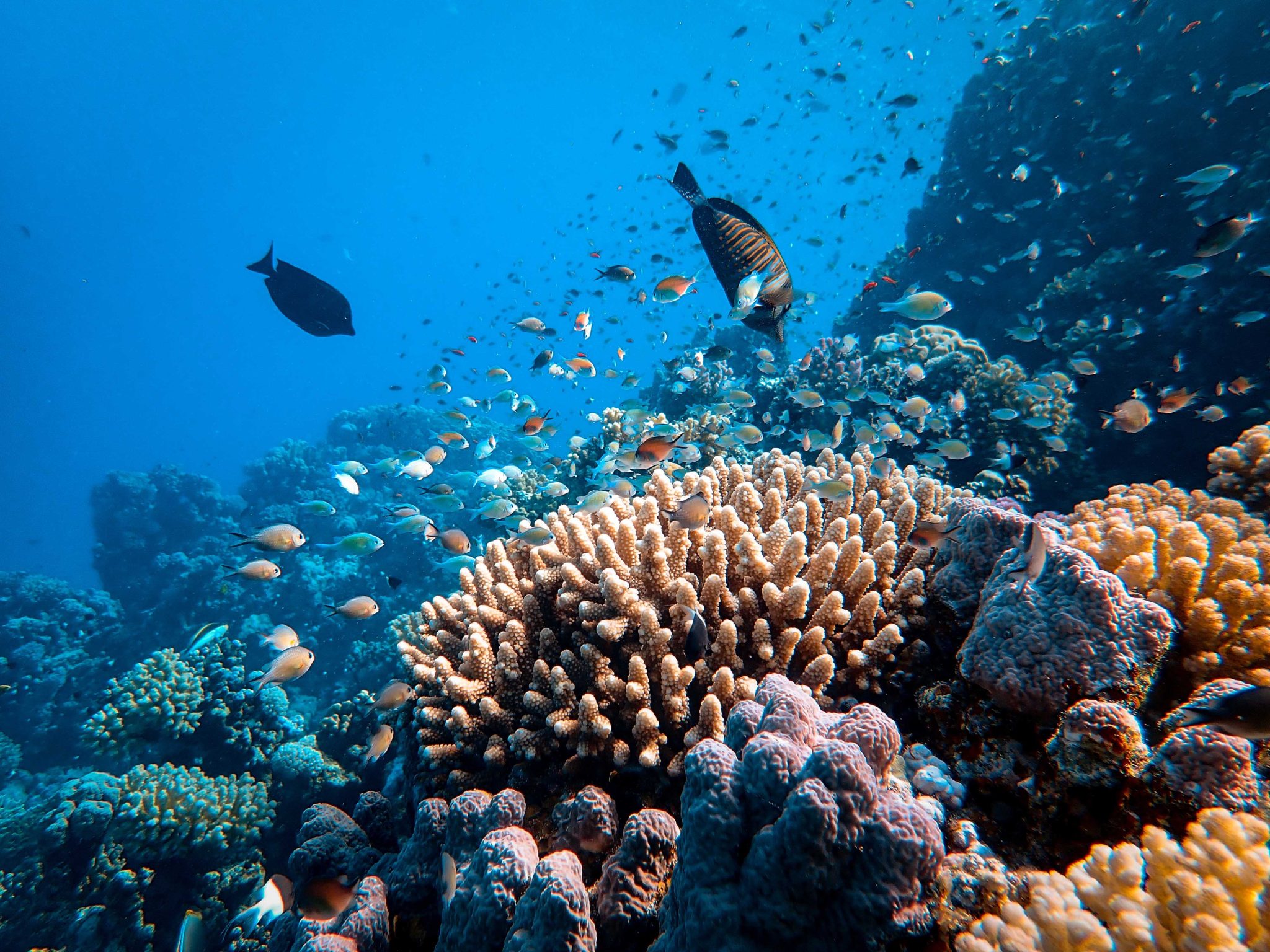Blogs
11 Fitness Tips to Maximize Your Snorkeling Adventures
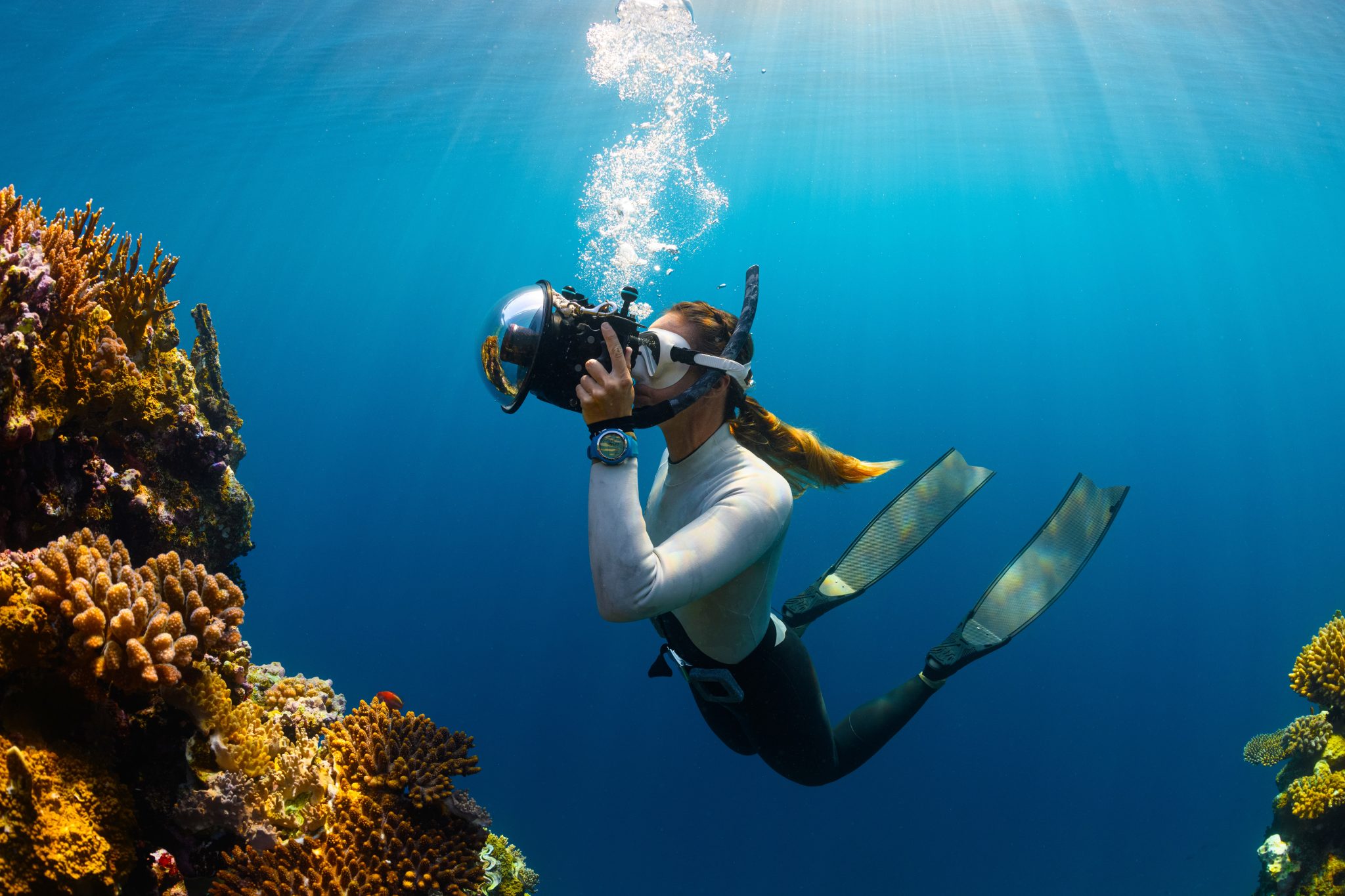
Snorkeling is more than just a leisure activity; it’s a window into an awe-inspiring world full of life. Imagine gliding effortlessly through the water, exploring vibrant coral reefs and encountering marine life up close – all while feeling safe, confident, and relaxed. In this article, we’ll share a series of fitness tips to help boost your snorkeling fitness and enhance your underwater experience.
- Understand the demands of snorkeling.
Snorkeling engages your body in in a variety of movements – from swimming and floating to the rhythmic motion of finning. Different snorkeling environments, from calm lakes to more adventurous open waters, have various challenges. Being fit enhances your ability to adapt and enjoy these settings, making your snorkeling journey both exciting and comfortable.
- Work on your cardiovascular fitness.
Longer snorkeling sessions demand stamina, and cardiovascular fitness is your ally here. Activities like swimming, brisk walking, or cycling, will help to improve your endurance, allowing you to explore underwater for longer without getting tired. Gradually increase your cardiovascular fitness to open the doors to more rewarding snorkeling adventures. Simply add some fitness activities to your daily life or in the months before your next snorkeling trip.
- Strengthen your core muscles.
Your core acts as the anchor for your stability and control in the water. A strong core lets you move effortlessly, maintain your position in the water, and glide more easily in choppy waters. All of which means you can focus on the beautiful landscapes and marine life around you.
Exercises like planks, Pilates, and yoga poses that target your core muscles, will help you to build core strength and move through the water with less effort. As with any new fitness regime, start slowly and work with a fitness professional to make sure you don’t injure yourself.
- Build upper body strength.
Strong back muscles are essential for easy maneuvering while snorkeling and during finning. Exercises like push-ups, lateral raises, and rowing will enhance your upper body strength. Strengthening these muscle groups not only makes it easier and less tiring to move in the water, but it also means you can explore for longer and protect your back from injury.
- Strengthen your legs.
Effective finning relies on strong leg muscles. Incorporating squats, lunges, and calf raises into your fitness routine will help to build leg strength, ensuring strong, smooth finning motions. This is especially important when you’re snorkeling with large marine life that you need to fin to keep up with, such as whale sharks.
- Get flexible.
Your muscles work hard in the water, and you adjust your body position a lot when snorkeling – often without even realizing it. Being flexible makes snorkeling easier on your body, so you won’t ache the next day! Add some stretches to your usual fitness routine to improve your flexibility. A supple body also allows you to move with ease and enjoy the marine life and landscapes around you.
- Work on your breathing.
Being able to breathe easily and fully is vital for snorkeling. Strong respiratory muscles ensure a calm and relaxed snorkeling experience, letting you fully appreciate the beauty of the aquatic world. Breathwork exercises are a great way to improve lung capacity, and there are numerous breathwork courses online to guide you.
- Preventing snorkeling-related injuries.
Make sure you warm up with some gentle stretches before your snorkeling session. Simple exercises like arm swings and leg swings help prepare your muscles for activity. As part of your snorkeling gear, also include a compact first aid kit to address minor cuts, scrapes, or stings that may occur during your adventures.
- Nutrition and hydration.
Proper nutrition fuels your body for optimal snorkeling performance, but you don’t want to eat a big meal before you go snorkeling. Instead, eat something small and nourishing before you go snorkeling and keep hydrated by drinking water.
Consume healthy snacks like trail mix or energy bars to keep your energy levels steady throughout your snorkeling day. In colder environments, a flask of hot drink provides comforting warmth after your snorkeling adventure.
- Listen to your body.
Take your time when you go snorkeling and allow your body to adapt to the aquatic environment. Listen to your body’s cues, and don’t push yourself beyond your comfort level. As you gain confidence and stamina, you’ll naturally progress to more challenging snorkeling adventures.
- Stay safe in the water.
Prioritize your safety by investing in snorkeling equipment designed for visibility and buoyancy. Brightly colored snorkel vests, dive floats, and flags make you easy to see in the water. Before setting out, familiarize yourself with local tides, currents, and potential boat traffic as well to ensure a secure and enjoyable snorkeling experience.
Just remember, fitness is a journey, and small changes make a difference. You will naturally get fitter and stronger the more you go snorkeling and if you add some simple fitness activities into your daily life. If you want to learn more advanced in-water skills and explore in new ways, try scuba diving or freediving on your next snorkeling vacation. They both offer fun ways to expand your underwater horizons while simultaneously boosting your fitness levels and confidence.
Kathryn Curzon, a shark conservationist and dive travel writer for SSI (Scuba Schools International), wrote this article.
Header image: Neom
Blogs
Alonissos: The complete diving destination (Part 1)

In June we were incredibly fortunate to be invited to dive in Alonissos, a small Greek Island in the Sporades island chain located in the North Aegean Sea. While I have long been a big fan of the Greek Islands as a great holiday destination, I had not had the opportunity to do any diving on previous visits and Mike and I were extremely excited to see what Alonissos had to offer both above and below the surface!

The Sporades are easily accessible via the airport in Skiathos (the first island in the chain), which is served by Jet2 flights from all major UK airports from May through October. Numerous ferries and charter boats make island hopping from Skiathos Town a breeze. After an hour boat ride, the picturesque port of Patitiri was a wonderful introduction to Alonissos, where we were met by our gracious hosts Kostas of Albedo Travel and Dias of Alonissos Triton Dive Center. Mike and I were delighted to be staying at the Paradise Hotel, aptly named for its stunning views over the sea and great location for walking to the waterfront.

Alonissos is beautifully situated in the National Marine Park of Alonissos and the Northern Sporades, the largest marine protected area in Europe. The surrounding seas offer fabulous marine life, including incredibly rare species such as the Mediterranean monk seal. They boast deep walls covered in gorgonians and sponges, stunning topography with caverns, swimthroughs and pinnacles, and the first accessible ancient shipwreck from 500BC!

In locations where historical sites have been reported, the waters are largely restricted, but with collaboration between government, underwater archeologists and dive centres, incredible underwater museums are being created for a truly unique diving experience. Alonissos is home to the first of these, the Ancient Shipwreck of Peristera Accessible Underwater Archeological Site. The chance to dive into history (along with reports of healthy reef life and amazing underwater topography) meant Mike and I were keen to get in the water.

Our introduction to the diving around Alonissos was at the Agios Georgios Pinnacles, in the channel between Alonissos and Skopelos. This fantastic site was named “The Chimney,’ and proved to have a huge amount to see. We got to a decent depth here (over 25m), and marvelled at a colourful reef wall with a wonderful swim through whose rocky walls were absolutely covered with life. As well as brilliant topography there was no shortage of macro life here. We saw numerous nudibranchs, five different species in total. The second dive at Mourtias reef nearby was a shallower dive along a nice wall with lots of crevices. Several moray eels and grouper called this site home. We enjoyed looking in the crevices for lobster and smaller benthic life, such as cup corals and tunicates.

Our itinerary allowed us two dives a day with afternoons left to explore the island with our hire car and evenings to enjoy the famous Greek hospitality. This proved to be a lovely mix of in-water and land based diversions.

The next days diving to the Gorgonian Gardens and Triton’s Cave was to be even better! These two stunning sites are nothing short of fabulous. The Gorgonian Gardens was a deep wall near to the Agios Georgios islands. The ever-present currents in this deep channel meant that the sea life was amazing … the namesake Gorgonian sea fans dotted the wall at a depth of 30 to 50 meters, getting ever larger the deeper we went. Above 30m was by no means less beautiful, with sponges, corals, scorpionfish, moray eels and some rare and colourful nudibranchs.

The second shallower dive of the day was to Triton’s Cave or the Cavern of Skopelos, on the east side of that island. The spectacular rock formations had wild striations both above and below the water making a truly epic topography. The cavern entrance was at 14m, and big enough for a buddy pair, winding up to 6m and passing two beautiful windows out into the blue. Emerging from the cavern, the light at the shallower depths and the incredible rock formations made for a fantastic gentle swimming safety stop and we all surfaced by the boat with massive grins.

Check out our next blog :Alonissos: The complete diving destination (Part 2)” to hear about our amazing dive on the 2500 year old Peristera Wreck!
Thanks to:
Alonissos Triton Dive Center https://bestdivingingreece.com/
Albedo Travel https://alonissosholidays.com/activities/
Paradise Hotel https://paradise-hotel.gr/
Alonissos Municipality https://alonissos.gr/en/
Blogs
Mamma Mia! Diving Skopelos (Part 2)

Our second days dive itinerary was to the famous Christoforos wreck! This is arguably the best dive in Skopelos and though only open to divers with deep diving experience, this 83m long wreck is well worth the visit.
The Christoforos sits in 43 meters of water with the deck at 32 to 35 meters. A 30m dive can give an impressive view of the wreck, though such a large wreck needs a few dives to truly do it justice. Given its ideal location just a 2 minute boat ride from the dive centre dock it is an excellent first dive of the day. The sheltered site is also diveable in all but the absolute worst weather so although deep, the water is usually clear with little to no current making it a very pleasant dive. The site is superb for technical diving and a great training site for the Tec 40 and 45 programs, offered by Skopelos Dive Center.

The Christoforos wreck was originally a collier ship built in 1950 at Grangemouth shipyard under the name “Thomas Hardie”. In 1976 she joined the Greek merchant fleet as “Christoforos”. On the 2nd of October 1983 the Christoforos was carrying 2600 tonnes of cement from Volos to Piraeus Port. During the voyage the weather turned, resulting in the ship developing a 7 degree list, whereby she changed course for safe anchorage at Panormos, Skopelos. The ship reached Panormos at 16:00 with a list of 17 degrees and water ingress to No. 1 hull. Though attempts were made to right the vessel, the crew were ordered to abandon ship at 22:00. The captain, lieutenant and the quartermaster remained to try and save the ship, but had to abandon the attempt themselves and the Christoforos finally sank at 05:30 on 3rd October 1983. She now sits upright in 43 meters of water less than 200m from shore in Panormos.

Diving has only been allowed here since 2018, so the wreck is very well preserved and a real treat to dive. Permission to dive here was granted by the authorities after lots of incredibly hard work by the Skopelos Dive Center staff. Having a fantastic wreck in such an amazing location and in excellent condition is a real privilege.

Of all the sites in Skopelos this was the site Mike and I were most keen to experience. Having kitted up and zipped across the bay to the mooring, we left the surface and followed the descent line until the wreck emerged spectacularly from the blue at 15m. She is a big and beautiful wreck, sitting as though calmly continuing her journey along the seabed. With most of her original features still intact there were points of interest everywhere, including the anchors, winches, ships telegraphs, the wheel and RDF antenna.

We found that aquatic life had colonised the ship, with schools of fish, electric blue nudibranchs, a large moray eel and the resident scorpionfish lurking inside the bridge. The Christoforos was truly a stunning wreck and despite maximising our time at depth we eventually had to say our goodbyes and begin the slow and steady return to the surface.

After a superb morning dive we had the afternoon to do a little sightseeing of the island, with a trip to the church of Agios Ioannis Kastri made famous by the blockbuster movie “Mamma Mia!”. Mike and I spent a happy afternoon pootling around in our little hire car before meeting up with Lina from Skopelos Dive Center. An underwater archeologist as well as a dive professional, Lina had offered to show us a rather special attraction, the Christoforos shipwreck Digital Spot public information and awareness centre.

A fantastic initiative made possible from the collaboration of the government and hard work of the staff at Skopelos Dive Center is the “Digital Spot” in Agnontas port. This information center has a number of displays on the history of the Christoforos wreck, the process by which the wreck was allowed to be opened to the public for diving tourism, other sites of historical interest in the area, a video of the wreck and the best bit, a virtual reality dry dive experience! The beauty of the VR system is that non diving members of the family can see what you have seen on the wreck, or you can see areas that you may not have explored during the dive due to time or depth limitations. It was a truly immersive experience and a great addition to the dive itself.

After a wonderful day we celebrated our last evening on the island with an exquisite meal in Skopelos Town with fabulous views over the town and bay, washed down with the excellent local wine. The lamb with lemon and potatoes was a meal which I could happily eat every day for the rest of my life!

Skopelos is an island that truly has it all. The diving is excellent, the landscape is beautiful with plenty of non diving activities, the locals friendly and the food and drink superb. Given how accessible it is as a holiday destination it has avoided becoming overcrowded and even in peak season offers a fun yet relaxing atmosphere. We highly recommend giving Skopelos a visit. We will certainly be back again!
Thanks to:
Municipality of Skopelos (https://skopelos.com/)
Skopelos Dive Center (https://sporadesdiving.gr/)
Ionia Hotel (https://www.ioniahotel.gr/en)
Dolphin of Skopelos (https://dolphinofskopelos.com/)
Ta Kymata restaurant (@takymata)
The Muses restaurant (https://www.facebook.com/TheMussesMousses/)
Aktaiov resturant (https://skopelos.com/listings/aktaion-taverna/)
-

 Blogs2 months ago
Blogs2 months agoDiving With… Nico, Ocean Earth Travels, Indonesia
-

 News1 month ago
News1 month agoMurex Bangka Announce New Oceanfront Cottages & Beachfront Dining
-

 Blogs2 months ago
Blogs2 months agoA new idea in freediving from RAID
-

 Marine Life & Conservation1 month ago
Marine Life & Conservation1 month agoIceland issue millionaire whale hunter a licence to murder 128 vulnerable fin whales
-

 Marine Life & Conservation2 months ago
Marine Life & Conservation2 months agoThe Shark Trust Great Shark Snapshot is back
-
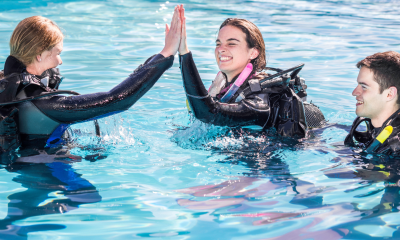
 News3 months ago
News3 months agoCharting New Waters; NovoScuba Goes Global with the Launch of their Revolutionary Dive Training Agency!
-

 Gear News1 month ago
Gear News1 month agoNew Suunto Ocean – a dive computer and GPS sports watch in one for adventures below and above the surface
-

 Marine Life & Conservation Blogs2 months ago
Marine Life & Conservation Blogs2 months agoBook Review: Plankton


